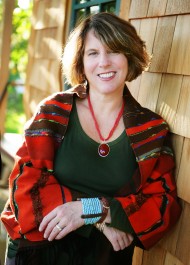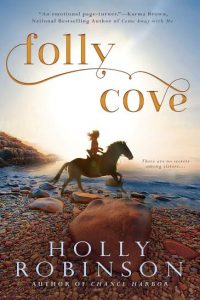A Return to Spain: Lessons on the Writing Life
 Last week, I had a chance to stop in Madrid for a few days on my way home from Senegal, where I’d been visiting my daughter. I think of Spain as my touchstone—especially Madrid—because I have been here at so many different points in my life.
Last week, I had a chance to stop in Madrid for a few days on my way home from Senegal, where I’d been visiting my daughter. I think of Spain as my touchstone—especially Madrid—because I have been here at so many different points in my life.
I first lived in Madrid as a college student. I had no idea that I would become a writer. In fact, I was pretty sure I was going to be a doctor. Meanwhile, my time in Madrid transformed me completely. I was a small town New England girl, and I was fascinated by everything: the architecture and the tapas bars, even the buses and trains. I fell madly in love for the first time, with a Spanish law student, and imagined that one day we would be married and have a bilingual life–one that included me practicing medicine and Friday night dates in our favorite tapas bars.
That romance didn’t last. Neither did my dreams of becoming a miracle worker. Instead, I discovered fiction writing my last semester of college and tossed the idea of medical school out the window, working at various jobs to support my fiction habit: secretary, construction worker, teacher.
The next time I went to Spain, I was a graduate student in a creative writing program. I had published a total of two stories in literary journals for the grand sum of zero dollars. My traveling companion was a professor who wanted me to move with him to Michigan, where he had a tenured university job.
As we ate tapas and drank wine, I wondered if that was my destiny: to become a professor’s wife who dabbled in writing short stories and taught creative writing.
I decided to thwart that fate by moving alone to San Francisco. By then, I had formed this mental image of what a “real” woman writer looks like: a wild-haired world traveler who indulged in lots of love affairs and wine, and who lived off her smart observations and book royalties.
I lived out part of this fantasy during a six-month backpacking trip through Asia, during which I wrote furiously enough to fill dozens of journals. When I returned to California at age 29, I met another man and became unexpectedly pregnant. Another fork in the road. I was beginning to doubt whether I’d ever publish a novel. The man had a good job and we were in love, so I married him and had the baby.
We had a second child soon afterward, and I started working as a freelance writer. It was at least a way to keep writing, and I started to make money at it. I also wrote fiction during my few free hours. The marriage didn’t last, but to my surprise, my passion for motherhood equaled, or even surpassed, the passion I felt for writing fiction.
I kept writing through my divorce and second marriage, this time to a man with two children of his own. We had another child together, and with five children under the age of ten, the best word to describe our family life was “chaos.” Yet I kept writing. By now, I was earning a steady income as a features writer for magazines, which gave me the courage to keep writing fiction. I even had a literary agent, but my novels somehow never made it over an editor’s threshold.
The third time I visited Madrid, I did so on a magazine assignment. I brought my husband and our five children, and my mother, too. During one sunny afternoon in Plaza Mayor, my husband was sipping a beer and our children were playing with tiny bouncing balls on the cobblestones, their laughter echoing off the grand old buildings. I looked up from the notebook where I’d been scribbling notes for a new novel, and thought, “Here is my life. I am a writer. Not a gypsy, alone and unencumbered, but a writer who is loved and happy.”
That was another turning point in my life. Before, I had been striving to achieve some grand literary vision. My novels were rich in description and lyrical language but, to put it bluntly, they lacked plot and heart. The voice was never my own, but what I thought it “should” be.
I started a new novel the next year, this time about a woman painter who discovers, when she goes home from Mexico to care for her invalid mother in New England, that this wasn’t her real mother after all. The novel focused on her search to find her true family.
 My agent sold that novel to a major publisher—the same publisher that went on to buy four more of my novels, including my newest, Folly Cove, out in October 2016. I had finally found my voice.
My agent sold that novel to a major publisher—the same publisher that went on to buy four more of my novels, including my newest, Folly Cove, out in October 2016. I had finally found my voice.
One of my favorite things about our most recent trip to Madrid was the self portrait we saw of Goya, probably Spain’s most important painter during the 18th and 19th centuries. In this painting, done about 1795, Goya is at his easel, wearing a curious hat with candles around the brim. Why the candles? Because he often painted portraits in a single long session, even when the light had faded.
His self portrait reminded me that every artist works long hours and makes sacrifices, but that is the point: to embrace every moment life grants us to live and create. You never know where your path will lead. The important thing is to keep following it.
—
Novelist, journalist and celebrity ghost writer Holly Robinson is the author of several books, including The Gerbil farmer’s Daughter: A Memoir and the novels The Wishing Hill, Beach Plum Island, Haven Lake, and Chance Harbor. Her newest novel, Folly Cove, will be published by Berkley/Penguin in October 2016.
Holly’s articles and essays appear frequently in publications such as Cognoscenti, The Huffington Post, Parents, Redbook and dozens of other newspapers and magazines. She and her husband have five children and a stubborn Pekingese. They divide their time between Massachusetts and Prince Edward Island, and are crazy enough to be fixing up old houses one shingle at a time in both places.
Visit her at www.authorhollyrobinson.com and on Twitter @hollyrob1.
Category: How To and Tips
























A really interesting insight into another writer’s life.